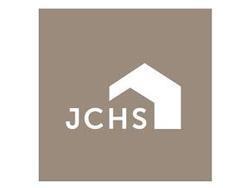Housing Market Slows Due to Inflated Values & Higher Interest Rates
Cambridge, MA, June 23, 2022-After a record-shattering year in 2021, the housing market is at an inflection point, reports Harvard's Joint Center for Housing Studies.
Higher interest rates have taken some heat out of the homebuying market, and the large number of apartments under construction should bring some relief on the rental side. For lower-income households and households of color, though, the pressure of high housing costs is unlikely to relent. According to The State of the Nation’s Housing 2022, a new report from the Harvard Joint Center for Housing Studies out today, the surge in the prices of gas, food, and other necessities has made matters worse, especially now that most pandemic emergency government supports have ended.
The costs of housing continue to climb. Home price appreciation nationwide hit 20.6% in March 2022, marking the largest jump in three decades, and is continuing to rise. The runup has been widespread, with 67 of the top 100 housing markets experiencing record-high appreciation rates. Meanwhile, rents were up 12% in the first quarter of 2022, with increases in several metro areas exceeding 20%. “Rents for single-family homes rose even faster, pushed up by increasing demand for more living space among households able to work remotely,” says Daniel McCue, a senior research associate at the Center. “Adding to the pressure, investors moved aggressively into the single-family market over the past year, buying up moderately priced homes either to convert to rental or upgrade for resale.”
Surprisingly strong household growth throughout the pandemic contributed to the sharp rise in housing costs. Much of the jump was among millennials; an uptick in new household formations among adults under 45 tacked on an additional 400,000 annually to household growth over the past five years. Meanwhile, the number of older-adult households is also growing rapidly with the aging of the baby boomers, exacerbating the need to adapt the housing stock and make it more accessible. Over the long term, though, housing demand is set to decline dramatically; population growth, the primary driver of household growth, is now at a 100-year low as birth rates have fallen, death rates have risen, and immigration has slowed to a trickle.
With interest rates rising, on top of double-digit home price increases, the income and savings needed to qualify for a home loan have skyrocketed, raising the financial hurdles for first-time and middle-income buyers. Potential homebuyers saw monthly mortgage payments on the median-priced U.S. home rise by more than $600 over the past year. “At today’s prices, the typical downpayment that a first-time buyer would need for a median-priced home is $27,400,” says Alexander Hermann, a Senior Research Analyst at the Center. “Without help from family or other sources, this would rule out 92% of renters, whose median savings are just $1,500.”
